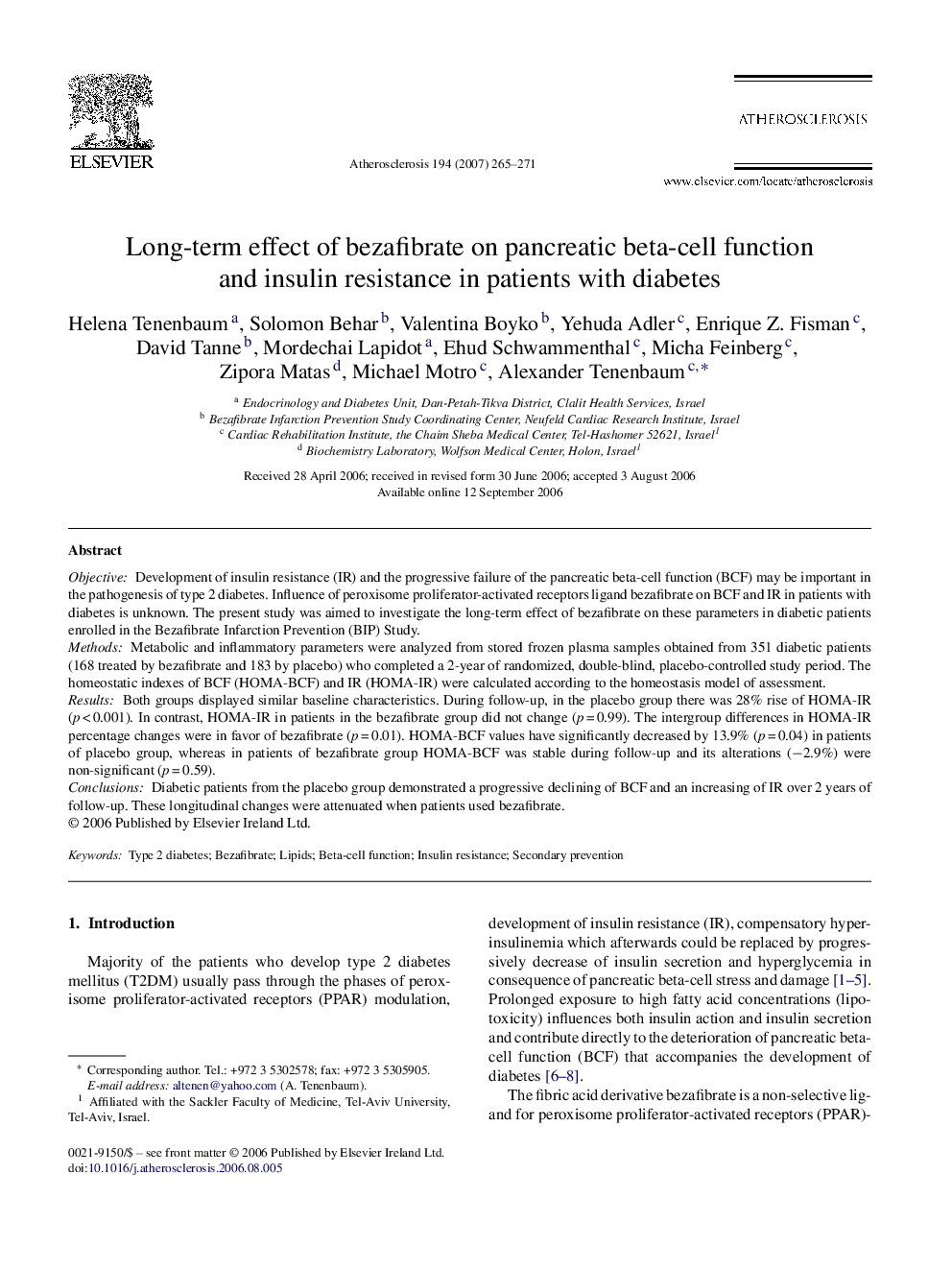| Article ID | Journal | Published Year | Pages | File Type |
|---|---|---|---|---|
| 2894659 | Atherosclerosis | 2007 | 7 Pages |
ObjectiveDevelopment of insulin resistance (IR) and the progressive failure of the pancreatic beta-cell function (BCF) may be important in the pathogenesis of type 2 diabetes. Influence of peroxisome proliferator-activated receptors ligand bezafibrate on BCF and IR in patients with diabetes is unknown. The present study was aimed to investigate the long-term effect of bezafibrate on these parameters in diabetic patients enrolled in the Bezafibrate Infarction Prevention (BIP) Study.MethodsMetabolic and inflammatory parameters were analyzed from stored frozen plasma samples obtained from 351 diabetic patients (168 treated by bezafibrate and 183 by placebo) who completed a 2-year of randomized, double-blind, placebo-controlled study period. The homeostatic indexes of BCF (HOMA-BCF) and IR (HOMA-IR) were calculated according to the homeostasis model of assessment.ResultsBoth groups displayed similar baseline characteristics. During follow-up, in the placebo group there was 28% rise of HOMA-IR (p < 0.001). In contrast, HOMA-IR in patients in the bezafibrate group did not change (p = 0.99). The intergroup differences in HOMA-IR percentage changes were in favor of bezafibrate (p = 0.01). HOMA-BCF values have significantly decreased by 13.9% (p = 0.04) in patients of placebo group, whereas in patients of bezafibrate group HOMA-BCF was stable during follow-up and its alterations (−2.9%) were non-significant (p = 0.59).ConclusionsDiabetic patients from the placebo group demonstrated a progressive declining of BCF and an increasing of IR over 2 years of follow-up. These longitudinal changes were attenuated when patients used bezafibrate.
